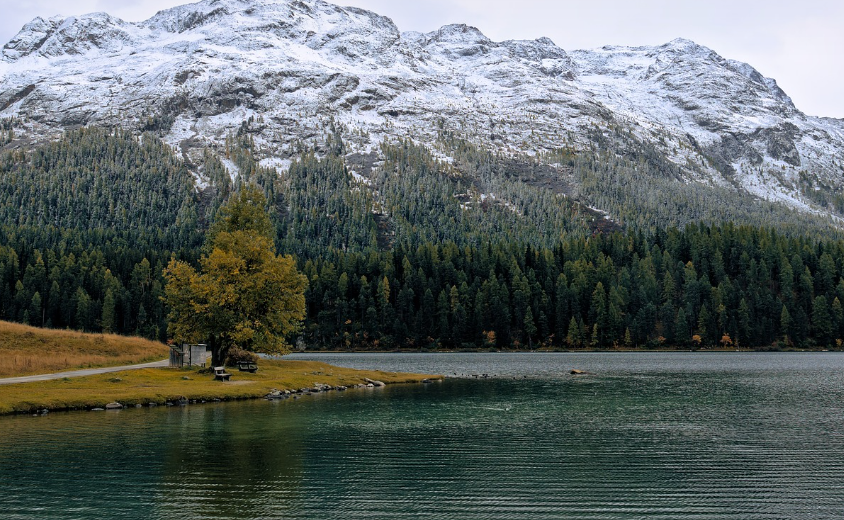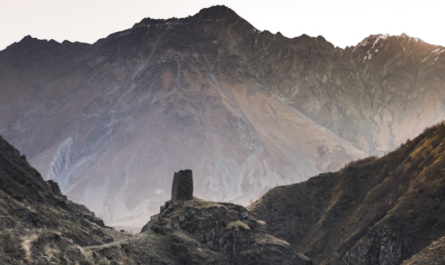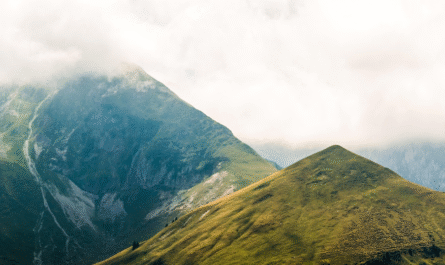Saint Moritz, nestled in the majestic Swiss Alps, is not only synonymous with luxury, winter sports, and high-end leisure—it is also a land steeped in rich history and captivating legends. The mountains that embrace this iconic resort town have witnessed centuries of human endeavor, myth, and mystery. From ancient folklore and medieval tales to modern narratives of resilience and reinvention, these peaks hold stories that continue to inspire and intrigue both locals and visitors alike.
In this comprehensive exploration, we journey through the historical evolution of Saint Moritz’s mountains and delve into the legends that have been passed down through generations. Along the way, we uncover how these tales have shaped the region’s cultural identity, influenced local traditions, and contributed to the enchanting allure that draws travelers to this alpine paradise.
1. The Geological Formation of the Alps and Saint Moritz
A. The Birth of the Alps
The formation of the Alps is a geological saga that dates back millions of years. The mountains surrounding Saint Moritz are part of the greater Alpine range, which was born from the collision of the African and Eurasian tectonic plates. This monumental event, occurring over 30 to 40 million years ago, led to the uplift of vast mountain ranges that now stand as some of the highest in Europe.
- Tectonic Activity: The powerful forces of plate tectonics gradually molded the region into the rugged and dramatic landscape we see today. The constant movement of these plates not only created towering peaks but also carved deep valleys and fjords that define the area’s unique topography.
- Glacial Sculpting: Over the millennia, glaciers played a significant role in refining the shape of these mountains. The last Ice Age left its indelible mark on the landscape, carving out pristine valleys and depositing glacial moraines that add to the region’s scenic beauty.
B. Saint Moritz and the Engadin Valley
Saint Moritz is located in the Engadin Valley, a region renowned for its spectacular natural beauty and distinct cultural heritage. The mountains that encircle the valley are integral to its identity, providing not only breathtaking views but also a natural fortress that has influenced local life for centuries.
- Natural Boundaries: The mountains have historically served as natural barriers, protecting local communities from external threats and shaping the region’s historical development. They have also been a source of resources, from timber and water to minerals, which have contributed to the valley’s prosperity.
- Climatic Influence: The towering peaks influence the local climate, creating a microclimate that has made the Engadin Valley a popular destination for health and wellness since the 19th century. The crisp Alpine air, combined with abundant sunlight, was once believed to have healing properties, drawing visitors seeking recovery and rejuvenation.
2. A Historical Overview: From Ancient Times to Modern Saint Moritz
A. Early Inhabitants and the Origins of Local Legends
The history of human settlement in the Engadin Valley stretches back thousands of years. Early inhabitants, including Celtic and Roman groups, were drawn to the region by its natural resources and strategic location. Over time, these communities developed rich oral traditions that celebrated the power and mystery of the mountains.
- Mythical Beginnings: Early legends often depicted the mountains as the abode of gods, spirits, and mythical creatures. These stories served not only as a means of explaining natural phenomena—such as sudden weather changes or unexplained echoes—but also as a way to instill respect for the formidable power of nature.
- Sacred Landscapes: Many ancient cultures considered mountains to be sacred, places where the earthly and divine intersected. In the Engadin Valley, certain peaks were revered as sites of worship and pilgrimage. These traditions laid the groundwork for the myriad legends that continue to captivate visitors today.
B. Medieval Chronicles and Folklore
During the medieval period, the mountains of Saint Moritz became intertwined with tales of chivalry, conquest, and romance. Monasteries and local chronicles from this era often mention mysterious happenings in the mountains—such as sightings of ethereal figures, miraculous healings, and battles fought under the watchful eyes of guardian spirits.
- Knightly Legends: Stories emerged of brave knights and noble warriors who traversed the treacherous Alpine passes in search of honor and adventure. These tales often featured supernatural elements, such as enchanted forests and mystical creatures that tested the valor and integrity of the heroes.
- The Curse of the Mountains: Another recurring motif in medieval folklore was the idea of a curse—mysterious forces that could bring misfortune or bless those who showed respect for nature. Such legends served as both warnings and guides, emphasizing the need for humility and reverence in the face of the mountains’ awe-inspiring might.
C. The 19th Century and the Birth of Saint Moritz as a Health Resort
The 19th century marked a turning point for Saint Moritz, as the valley began to attract international visitors seeking the reputed health benefits of the Alpine environment. Pioneers in hydrotherapy and sanatorium medicine discovered that the pure mountain air and mineral-rich waters of the region had remarkable healing properties. This era transformed Saint Moritz from a remote Alpine village into a sophisticated health resort frequented by Europe’s elite.
- The “Spa Town” Reputation: The natural beauty and therapeutic qualities of the mountains contributed to the rise of Saint Moritz as a spa town. Visitors were drawn not only to the promise of physical rejuvenation but also to the elegant, cosmopolitan atmosphere that emerged during this period.
- Cultural Exchange: As the resort grew in popularity, the influx of international visitors brought with them new ideas, customs, and artistic influences. This cultural melting pot further enriched the local legends and traditions, blending old Alpine folklore with modern narratives of wellness and luxury.
D. Modern Developments and the Global Allure of Saint Moritz
Today, Saint Moritz stands as a global symbol of luxury and sophistication, yet its rich history and mystical legends remain at its core. The mountains that once served as sacred landscapes and battlegrounds for ancient heroes are now the backdrop for world-class skiing, high-profile events, and upscale tourism.
- Luxury and Legacy: Modern Saint Moritz seamlessly blends its storied past with contemporary luxury. Visitors can enjoy the finest accommodations, gourmet dining, and exclusive experiences—all while marveling at the timeless beauty of the Alpine landscape.
- Preservation of Heritage: Efforts are underway to preserve both the natural environment and the cultural heritage of the region. Museums, cultural festivals, and guided tours ensure that the legends and history of Saint Moritz’s mountains continue to be celebrated and passed down through generations.
- Inspiration for Art and Literature: The mystique of the mountains continues to inspire artists, writers, and filmmakers. From poetry and novels to blockbuster films, the legends of Saint Moritz are immortalized in various forms of art, enriching the global narrative of this iconic destination.
3. Legends and Myths: Stories That Define the Mountains
A. The Guardian Spirits of the Alps
One of the most enduring legends in the region is that of the guardian spirits said to inhabit the mountains. According to local folklore, these spirits watch over the valley, protecting it from harm and ensuring the natural balance is maintained.
- The Watchful Sentinel: In some tales, a mighty spirit known as the “Alpine Sentinel” is believed to reside atop the highest peak. This benevolent guardian is said to bless those who show respect for nature and punish those who exploit it recklessly.
- Mystical Encounters: Visitors and locals alike recount experiences of inexplicable sounds, fleeting shadows, or sudden calmness in the midst of a storm—phenomena attributed to these mysterious protectors. Whether viewed as literal beings or metaphors for nature’s resilience, the guardian spirits add a layer of enchantment to the mountain landscape.
B. Tales of Ancient Battles and Lost Treasures
The rugged terrain of the Alps has been a silent witness to many historical events, including epic battles and quests for lost treasures. Legends speak of hidden riches buried deep within the mountains, guarded by both natural hazards and supernatural forces.
- The Knight’s Quest: One popular legend tells of a brave knight who ventured into the mountains in search of a fabled treasure. Along the way, he encountered mystical creatures, solved riddles posed by ancient spirits, and ultimately discovered that the true treasure was the wisdom and courage he gained on his journey.
- The Lost Gold Mine: Another tale recounts the story of a lost gold mine hidden within a secluded valley. Many have searched for this legendary mine, but it remains elusive—its existence a tantalizing blend of history and myth. Such stories have inspired countless adventurers and continue to fuel the imagination of treasure hunters and history enthusiasts.
C. Romantic Legends and Love Stories
The mountains of Saint Moritz are not only associated with tales of battle and mystery but also with romantic legends that evoke deep emotion and longing.
- Star-Crossed Lovers: One enduring myth tells the story of two lovers from rival families who defied the odds to be together. Their clandestine meetings in hidden valleys and secret mountain passes became the stuff of local lore. Although their love was forbidden, the spirit of their romance is said to linger in the mists that roll down the mountains at dawn.
- The Eternal Embrace: Another romantic legend speaks of a mysterious couple whose love was so profound that they were transformed into two mountain peaks, forever locked in an eternal embrace. This myth serves as a metaphor for the enduring power of love and the way the mountains can evoke timeless emotions in those who behold them.
D. Nature as a Living Legend
For many, the legends of Saint Moritz’s mountains are not just stories—they are lived experiences that connect people to the natural world. The mountains themselves are viewed as sacred entities, embodying the timeless interplay between the elements and the spirit of the land.
- Sacred Landscapes: The rugged beauty and raw power of the mountains inspire awe and reverence. Local traditions often include rituals or festivals that honor the mountains, seeking blessings for good fortune and protection.
- Symbol of Resilience: The mountains have weathered countless storms, both literal and metaphorical, standing as symbols of endurance and strength. Their silent testimony to the passage of time encourages locals and visitors alike to persevere in the face of challenges.
4. Preserving the Legacy: Conservation and Cultural Heritage
A. Environmental Conservation Efforts
The natural beauty of the Alps is a critical part of Saint Moritz’s allure, and preserving these landscapes is of paramount importance. Conservation initiatives in the region aim to protect the fragile ecosystems of the mountains while maintaining the cultural heritage that has developed alongside them.
- Sustainable Tourism: Efforts are underway to promote eco-friendly tourism practices that minimize environmental impact. This includes regulated hiking trails, sustainable transportation options, and guidelines for interacting with wildlife.
- Protected Areas: Several areas in and around Saint Moritz are designated as protected zones, ensuring that the natural environment remains pristine for future generations. These protected areas serve as living museums of the region’s geological and biological diversity.
- Community Involvement: Local communities are actively engaged in conservation efforts, blending traditional knowledge with modern environmental science. Festivals, educational programs, and community-led initiatives help raise awareness about the importance of preserving the mountains’ natural and cultural legacy.
B. Cultural Preservation and Promotion
The legends and history of Saint Moritz’s mountains are an integral part of the region’s identity. Preserving these stories is essential to maintaining the cultural richness that defines the area.
- Museums and Heritage Centers: Local museums and cultural centers showcase artifacts, historical documents, and interactive exhibits that tell the story of the mountains. These institutions play a vital role in educating both locals and visitors about the region’s past.
- Festivals and Events: Annual festivals celebrate the traditions and legends of the Alps. These events often include storytelling sessions, reenactments, and musical performances that bring the myths to life.
- Digital Archives: Modern technology is being used to digitize historical records, oral histories, and traditional songs, ensuring that the rich tapestry of legends is preserved for future generations. Online platforms allow a global audience to access and appreciate the cultural heritage of Saint Moritz.
C. The Role of Tourism in Shaping the Legacy
Tourism, when managed responsibly, can be a powerful force for preserving and promoting cultural heritage. The influx of visitors to Saint Moritz not only drives the local economy but also encourages the preservation of traditions and legends.
- Experiential Tours: Guided tours that focus on the history and legends of the mountains provide tourists with a deeper understanding of the region. These tours often include visits to historical sites, nature trails, and cultural landmarks.
- Storytelling Through Art: Local artists, writers, and filmmakers continue to draw inspiration from the mountains, creating works that capture the spirit of the legends. This creative output not only preserves the heritage but also evolves it, making it relevant to modern audiences.
- Global Influence: As Saint Moritz continues to attract international visitors, its cultural legacy becomes a part of the global narrative. The myths and history of the mountains, shared through various media, contribute to a broader appreciation of the region’s unique heritage.
5. The Future of Saint Moritz’s Mountain Legends
A. Embracing Modernity While Honoring Tradition
The challenge for Saint Moritz is to continue evolving as a global luxury destination while preserving the rich history and legends that define its landscape. Modern infrastructure, technological advancements, and innovative tourism practices must be balanced with a deep respect for tradition.
- Innovative Tourism: New tourism models that incorporate virtual reality (VR) experiences, interactive digital tours, and augmented reality (AR) apps are emerging. These technologies allow visitors to experience the legends of the mountains in immersive ways, blending modernity with tradition.
- Cultural Initiatives: Ongoing initiatives to document and promote local folklore ensure that the legends are not lost in the rush of modern development. Collaborations between cultural institutions, government agencies, and the private sector can create sustainable models for preserving and celebrating heritage.
B. Inspiring Future Generations
The legends and history of the Alps are not just relics of the past—they are living narratives that continue to inspire and educate. As more young people engage with these stories through schools, cultural programs, and digital media, the legacy of Saint Moritz’s mountains will endure.
- Educational Programs: Integrating local history and folklore into school curricula can foster a sense of pride and curiosity among young people. Hands-on activities, storytelling sessions, and field trips to historical sites help make these legends tangible.
- Youth Engagement: Social media and digital platforms offer new avenues for sharing these stories with a global audience. Creative projects like online documentaries, podcasts, and virtual tours can engage younger generations and encourage them to explore the region’s rich heritage.
- Artistic Expression: Encouraging artistic expression that draws on local legends helps keep the culture alive. Whether it’s through music, painting, or literature, young artists play a crucial role in interpreting and reinventing the myths of the mountains for a new era.
6. Conclusion: A Legacy of Beauty, Mystery, and Resilience
The history and legends surrounding Saint Moritz’s mountains are a tapestry of natural beauty, human endeavor, and timeless mystique. These majestic peaks have been witness to the passage of time—bearing stories of ancient battles, mystical guardians, and enduring love. They are both a testament to the power of nature and a reflection of the cultural heritage of the Engadin Valley.
For visitors, the mountains of Saint Moritz offer much more than a scenic backdrop; they provide a portal into a world where history and legend intertwine to create an experience that is as educational as it is awe-inspiring. Whether you’re a history buff, a nature lover, or a curious traveler, the stories of these mountains invite you to explore their depths and discover the magic that lies beneath the surface.
As Saint Moritz continues to evolve as a global destination, the preservation of its cultural and natural heritage remains a top priority. Through sustainable tourism, community engagement, and innovative cultural initiatives, the legacy of these mountains is being carefully nurtured and celebrated for future generations.
In a world where rapid change often threatens to erase the past, the enduring legends of Saint Moritz serve as a reminder of the timeless beauty and resilience of nature. They invite us to pause, reflect, and appreciate the stories that have shaped this extraordinary region. By embracing both modernity and tradition, Saint Moritz offers a unique journey that connects the present with the past—a journey that continues to inspire, educate, and captivate all who venture into its storied landscapes.
So, whether you are drawn by the allure of ancient myths, the splendor of natural beauty, or the promise of cultural enrichment, Saint Moritz’s mountains stand as a beacon of history and legend. Embark on this journey, and let the tales of the past guide you toward a deeper understanding of the present, and an appreciation for the beauty that endures through time.



